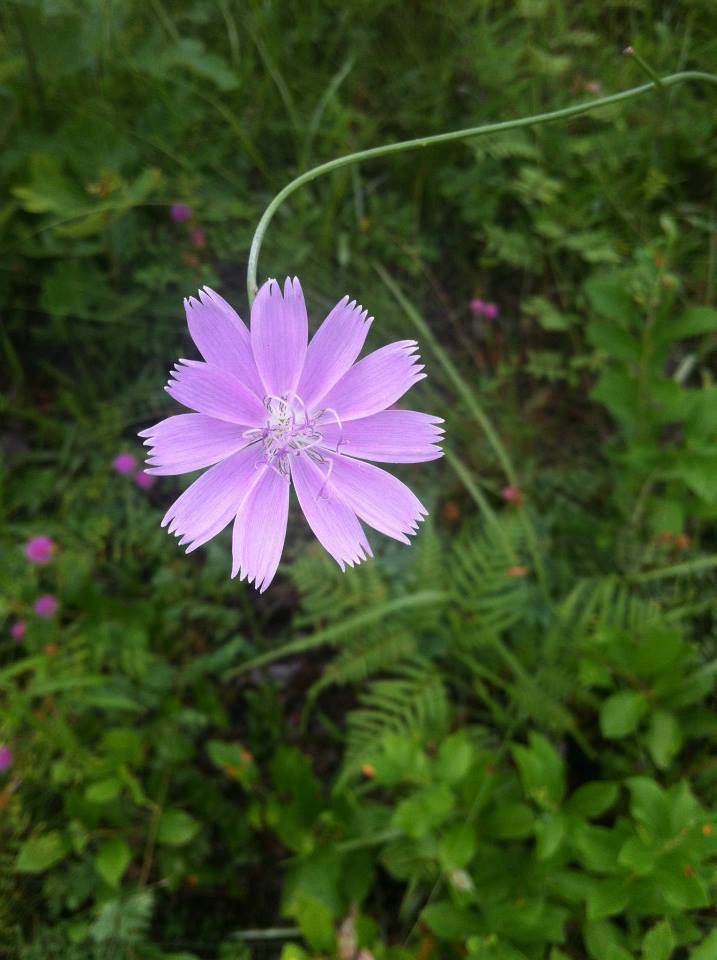Difference between revisions of "Lygodesmia aphylla"
KatieMccoy (talk | contribs) |
|||
| Line 15: | Line 15: | ||
| binomial_authority = (Nutt.) DC. | | binomial_authority = (Nutt.) DC. | ||
| range_map = LYGO_APHY_dist.jpg | | range_map = LYGO_APHY_dist.jpg | ||
| − | | range_map_caption = Natural range of ''Lygodesmia aphylla'' from USDA NRCS [http:// | + | | range_map_caption = Natural range of ''Lygodesmia aphylla'' from USDA NRCS [http://plants.usda.gov/core/profile?symbol=LYAP3 Plants Database]. |
}} | }} | ||
Revision as of 13:09, 16 October 2015
| Lygodesmia aphylla | |
|---|---|

| |
| Photo taken by Michelle M. Smith | |
| Scientific classification | |
| Kingdom: | Plantae |
| Division: | Magnoliophyta - Flowering plants |
| Class: | Magnoliopsida – Dicotyledons |
| Order: | Asterales |
| Family: | Asteraceae ⁄ Compositae |
| Genus: | Lygodesmia |
| Species: | L. aphylla |
| Binomial name | |
| Lygodesmia aphylla (Nutt.) DC. | |

| |
| Natural range of Lygodesmia aphylla from USDA NRCS Plants Database. | |
Common name: rose rush
Contents
Taxonomic notes
Description
A description of Lygodesmia aphylla is provided in The Flora of North America.
Distribution
Ecology
Habitat
It is found in Florida scrub community (Archbold Biological Station)(Deyrup et al 2002). This species has also been found in sandhills, pine flatwoods, pine-wiregrass savannas, and mixed woodlands (FSU Herbarium). It has been observed in open areas in dry, deep, moist-peaty, and loose sands as well as in gravelly soils (FSU Herbarium). This species also occurs in human disturbed areas such as clobbered scrub oak habitats, bulldozed areas, orange groves, along roadsides, along old fields, cut-over pinelands, fallow fields, spoil banks, and parks (FSU Herbarium).
Phenology
It has been observed flowering in April and July (FSU Herbarium).
Seed dispersal
Seed bank and germination
Fire ecology
This species has been found in annually burned areas (FSU Herbarium).
Pollination
The following Hymenoptera families and species were observed visiting flowers of Lygodesmia aphylla at Archbold Biological Station (Deyrup 2015):
Halictidae: Augochlorella aurata
Use by animals
Deyrup observed this bee, Augochlorella aurata, on L. aphylla (Deyrup et al 2002). Fire ants are not interested in the seeds of L. aphylla (Cumberland et al. 2013).
Diseases and parasites
Conservation and Management
Cultivation and restoration
Photo Gallery
References and notes
Cumberland, M. S. and L. K. Kirkman (2013). "The effects of the red imported fire ant on seed fate in the longleaf pine ecosystem." Plant Ecology 214: 717-724.
Deyrup, M.A. and N.D. 2015. Database of observations of Hymenoptera visitations to flowers of plants on Archbold Biological Station, Florida, USA.
Deyrup, M. J. E., and Beth Norden (2002). "The diversity and floral hosts of bees at the Archbold Biological Station, Florida (Hymenoptera: Apoidea)." Insecta mundi 16(1-3)
Florida State University Robert K. Godfrey Herbarium database. URL: http://herbarium.bio.fsu.edu. Last accessed: June 2014. Collectors: Loran C. Anderson, Robert F. Thorne, Gary R. Knight, Mark A Garland, R.K. Godfrey, Grady W. Reinert, S. W. Leonard, Robert J Lemaire, Gwynn W. Ramsey, R. S. Mitchell, O. Lakela, George R. Cooley, Carroll E. Wood, Jr., Kenneth A. Wilson, H. Larry Stripling, H. E. Grelen, Robert Kral, Mabel Kral, Mary Clare Langan, Elmer C. Prichard, Paul L. Redfearn, Jr., C. Jackson, Patricia Elliot, R. Komarek, M. Davis, J. M. Kane, Leon Neel, Julie Neel, R. A. Norris, and Cecil R Slaughter. States and Counties: Florida: Calhoun, Charlotte, Citrus, Clay, Duval, Franklin, Gulf, Hernando, Highlands, Indian River, Jackson, Lee, Leon, Levy, Liberty, Marion, Pasco, Pinellas, Polk, Sarasota, Suwannee, Volusia and Wakulla. Georgia: Baker and Thomas.